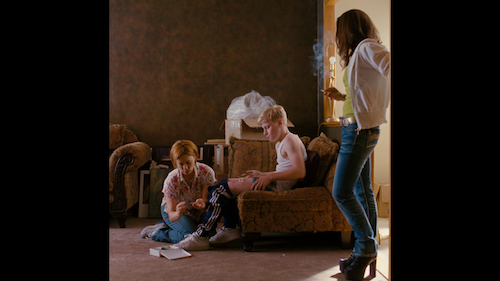Film History: Why are Canadian Films Like This?
Have you ever just known a film or show was Canadian before it really gets going (without actually knowing information beforehand)? Were you flipping through channels, and you stumbled upon something, and you could just tell? I don’t mean filmed in Canada. I mean made almost entirely by Canadians, in Canada, with Canadian production. I’ve had a number of people come up to me and ask what the deal with Canadian films is. Why aren’t they like American ones? We’re so similar in many ways, yet our film industries could not be more different. Well, here’s a short little history lesson.
Like anywhere else, Canada was developing its share of filmmakers once the art of film was spreading across the world. One of the first notable moments in Canadian film was the creation of the National Film Board (NFB) of Canada in 1939, with the intention of replacing the previously instated Government Motion Picture Bureau (created in 1918) as the primary producer of film in Canada. The NFB — then known as the National Film Commission — was meant to celebrate national documentaries and productions; of course, it was a possible avenue for Canadian propaganda near the start of World War II. Eventually, to promote Canadian film further, the Canadian Film Development Corporation (CFDC) was made to allot an amount of funds for the industry to use; when created in 1967, this amount was ten million dollars.
Dead Ringers
The CFDC was a little more successful, as the budget kept increasing over the years. Ten years later, the budget leapt to twenty five million dollars. The seventies was where a number of notable Canadian releases finally emerged (outside of groundbreaking documentaries and shorts which came earlier, of course), including Goin’ Down the Road. So, Canada was finally sparking its own little industry, after a number of years of focusing on specific outputs for the world to see (except they weren’t, especially with the minimal amount of promotion outside of small circles). A draw was beginning, and Canada was the place to shoot. Ultimately, it became the place to shoot for everyone, especially American filmmakers.
The Capital Cost Allowance (CCA) — a means of claiming that assets are depreciative during the filing of income taxes — was turned into a tax shelter around this time via loopholes. A major component of the CCA at the time stated that sixty percent of investments made toward a film could be written off against personal income taxes. This voided any donations to the NFB or CFDC. Canadian identities had to be removed as a result; any places, names, or histories were removed and made American, and Hollywood stars were featured instead of local talent. So, naturally, Canada was the haven for filmmakers. If you’ve ever wondered why many films and shows are shot up here but are presented as anything but Canadian, now you know why.
This resulted in a bit of a drop in focus on these Canadian works that were slowly coming out. Canadian soil was used for other films. Because of this dip in national quality and the over use of the tax shelter, the attempt to draw eyes worldwide to Canada was considered a failure. Films were being shot here, sure. No one could tell by watching these works at face value, though. This specific CCA regulation ceased to exist after 1981, and film is given a different rate. I can’t pretend to be a tax specialist any more, because I’m not. Any current information can be found here.
I’ve Heard the Mermaids Singing
The CFDC was renamed Telefilm shortly afterwards in 1984, and a new mandate was instilled as a means of apologizing for the earlier lack of care of Canadian specific films shot in Canada. The goal was to make Canadian works authentically Canadian. In the meantime, Canadian filmmakers were generating a new identity. Since Hollywood was taking over Canadian soil, and Canadians being picked up by Hollywood (either as filmmakers or as performers, amongst other positions) stayed in Hollywood, Canadian artists were beginning to be distanced from the works being shot here. Toss in the previous focus on documentaries and local shorts, and you have a nation that’s not playing the same game Hollywood is.
However, the Telefilm decision worked almost as an antithesis of what they may have wanted. With their goal to have authentically Canadian works in Canada, it’s almost out of spite that Canadians rebelled. Instead of going the Hollywood route here, Canadian filmmakers channelled the avant-garde ways of the underground (likely gestated during the tax shelter years) and European arthouse circles. In the ‘80s and early ‘90s, Quebec’s film scene really became its own genre; one that drifted away from the standard features like Mon oncle Antoine back in 1971. Now, Quebec cinema was a little bit of the experimental works you’d find from France, with a personal home grown touch. Then, there was the Toronto New Wave movement, which featured acclaimed visionaries like Atom Egoyan, Patricia Rozema, Bruce McDonald and more. Over the years, Canadian documentaries and shorts have continued, with some examples following a similar nature (the works of Mike Hoolboom, and My Winnipeg being a quasi-documentary by Guy Maddin.
Mommy
In these early years, many notable names emerged, including directors that would tiptoe between Hollywood and back home in Canada (David Cronenberg, who also explored the use of European coproductions), important social movements (including LGBTQ+ staples like Rozema’s I’ve Heard the Mermaids Singing), and independent productions and how they could exist in the mainstream (a great example being the awards season darling The Sweet Hereafter by Egoyan). Canada was finally having its own concrete cinematic voice. Consider that this identity we now know is only close to forty years old (fifty or sixty if you want to be really generous).
In recent years, this mutt of cinematic styles has really come into its own. Denys Arcand won Canada its fist International Feature Film Academy Award in 2003 with The Barbarian Invasions. Then we have the next generation, including the Quebec stream (a great example of a recent prodigy being Xavier Dolan, who directed Mommy as shown above) and the Toronto wave (Sarah Polley, whose Away From Her remains one of Canada’s finest films to date), amongst others. Other filmmakers are creating films the same way Canada blends cultures under one roof: by bringing their heritage into their films here (including Deepa Mehta, who has brought her tales of India over here, particularly her exquisite Elements Trilogy). Then there’s Denis Villeneuve, who we’ve lost to the United States like many other filmmakers; however, it was not until after he released Polytechnique and Incendies.
Canada’s films may be a bit strange, but understanding why they are this way is not only important: it’s simply fascinating. For me, I garnered a huge appreciation for what we have when I went into this piece of history years ago. We’re like an exclusively off-kilter American wave of cinema. It may not be Hollywood, but we already have a Hollywood. We have something special, here. It may not be everyone’s favourite taste, but it’s a different side of cinema that’s absolutely worth investing time into. Plus, it’s a style of cinema we can call our own. At its worst, we have noble attempts at a new perspective. At its best? Dead Ringers. Atanarjuat: The Fast Runner. Léolo. All of the films listed above, amongst many others by these same filmmakers.
These are exciting films, game changers for the industry, and peculiar arthouse takes on the things Hollywood might not want to touch. If you check out many of these works on IMDb, they may have slightly mediocre ratings. I think people are missing out on what’s really happening, and a bit of understanding may clarify what’s going on. Canadian film isn’t a nest of ugly ducklings. It’s a gathering of misunderstood beautiful swans (which occasionally carry a vicious bite). Actually, make them geese. It’s more appropriate that way.
Check out our top ten Canadian films of all time list while you’re here!
Andreas Babiolakis has a Masters degree in Film and Photography Preservation and Collections Management from Ryerson University, as well as a Bachelors degree in Cinema Studies from York University. His favourite times of year are the Criterion Collection flash sales and the annual Toronto International Film Festival.






